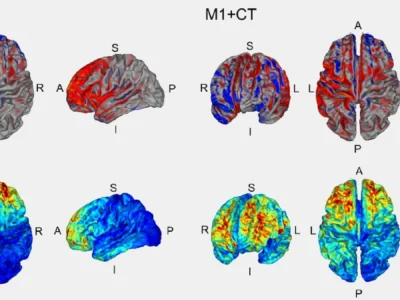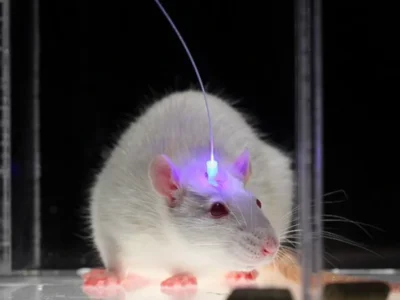Valeria Medina, neuropsychologist at NeuronUP, offers, from a rigorous and practical approach, scientific evidence on brain, cognitive changes and neuroplasticity during pregnancy.
Introduction: What is the mommy brain and what is its scientific basis?
The “mom brain” or mommy brain is a popular term that has been used in recent years to describe the difficulties concentrating, remembering information or sustaining attention during pregnancy and the postpartum period.
Up to 80% of pregnant women report subjective memory complaints (McCormack, Callaghan, & Pawluski, 2023), which has promoted a cultural narrative suggesting that gestation entails generalized cognitive decline. Such claims not only oversimplify the process of this stage, but can also be stigmatizing. Therefore, the aim of this article is to review recent scientific evidence on the neuroanatomical, hormonal and cognitive changes that occur during pregnancy, in order to rethink the perspective around the “mommy brain”.
Neuroanatomical changes and neuroplasticity in pregnancy
Neuroplasticity and hormonal influence
Pregnancy is one of the periods of greatest brain plasticity in adult life. This reorganization is influenced by a hormonal cascade that completely transforms the neurophysiological environment and prepares the body and brain for motherhood.
During gestation, levels of estrogens, progesterone, oxytocin, prolactin and cortisol increase significantly, hormones that not only regulate aspects such as appetite or body temperature, but also directly affect brain regions involved in cognition, mood and social behavior (Grattan & Ladyman, 2020).
For example:
- Oxytocin and prolactin are linked to the development of bonding and stress management; their increase facilitates maternal behavior and attachment between mother and child.
- Released cortisol contributes to regulating blood pressure and blood sugar. However, chronic exposure to elevated cortisol levels can alter executive functioning and compromise certain attentional processes, since these high levels can cause fatigue, anxiety and irritability.
- Endocrine adjustments facilitate synaptic reorganization that increases sensitivity to social cues —such as a baby’s cry or emotional expressions— and improves associative learning, which has adaptive value in the context of caregiving and attachment (Callaghan et al., 2022).
Structural reorganization of the brain during pregnancy
At the structural level, neuroimaging studies have consistently shown that changes in gray matter volume occur during pregnancy, especially in areas involved in social cognition such as the medial prefrontal cortex, the precuneus and the temporoparietal junction (Barba-Müller et al., 2019).
Rather than being interpreted as loss or deterioration, these changes seem to represent a kind of synaptic pruning that optimizes the functioning of certain neural networks that are more important at that time. For example, the reorganization of structures linked to the salience network —involved in detecting relevant stimuli and the dynamic adjustment of attention, and which connects structures such as the prefrontal cortex, amygdala, parietal cortex and thalamus— favors greater sensitivity to social and emotional signals in the environment, which is crucial for survival and newborn care.
The longitudinal study by Pritschet et al. (2024) followed pregnant women from the first trimester until after childbirth. A progressive reduction in gray matter volume in frontal and temporal regions was observed, including areas associated with executive functions such as the dorsolateral prefrontal cortex. In addition, changes in the functional connectivity of important networks such as the default mode network and the central executive network (which connects areas like the dorsolateral prefrontal cortex and the posterior parietal cortex) were documented, suggesting that the brain is readjusting to face the emotional, social and cognitive demands of motherhood. These changes intensified in the third trimester and, in some cases, persisted up to two years after childbirth, indicating prolonged neuroplasticity. Likewise, variations in cerebrospinal fluid volume and in the morphology of the brain ventricles were observed. All these adjustments could reflect a refinement in information processing and a more efficient reorganization of cognitive resources.

Subscribe
to our
Newsletter
Cognition during pregnancy: what do we really know?
So, if there are changes in the brain during pregnancy, what about cognitive functioning? The answer is not so simple. Many women report feeling more forgetful, with “brain fog”, less focused during pregnancy, or experiencing more lapses of memory. In other words, there is a clear subjective cognitive complaint, but after applying objective neuropsychological tests, the results tend to be inconsistent.
A meta-analysis conducted by Davies et al. (2018), which analyzed data from over 1,200 participants, found slight difficulties in cognitive functions such as memory, executive functions and overall cognitive performance. This was more notable in the third trimester, but did not reach clinically significant levels.
Longitudinal studies such as Logan et al. (2014) support this idea: while some women may experience mild difficulties, especially in tasks involving verbal memory, this is not a generalized “decline”. Crawley, Dennison and Carter (2003), for example, found no objective differences in attention or memory between pregnant and non-pregnant women, although they did note that pregnant women evaluated their own performance more negatively.
One of the most sensitive functions appears to be working memory. In the study by Janes et al. (1999), pregnant women scored somewhat lower on tasks involving this cognitive function; these differences were small and did not affect other types of memory. Likewise, the study by Younis et al. 2025 concurs with difficulties in working memory, but adds that there are difficulties in prospective memory, being the most consistently affected function (especially in everyday situations such as remembering appointments or pending tasks). It also described moderate difficulties in verbal-auditory episodic memory and processing speed, particularly from the second trimester onward.
As mentioned, the changes are not generalized nor clinically significant, but in most cases, these perceived difficulties can contribute to the “mommy brain” symptomatology that many women report at this stage.
It should also be noted that factors such as sleep quality exert a greater influence on performance than pregnancy itself; however, it is interesting that in the study by Callaghan et al. (2022) it is shown that, in some tasks with greater ecological value for that stage, pregnant women can even perform better; for example, they have been shown to perform better on tests of object-associated spatial memory related to infants. This suggests that the brain may be redirecting resources toward functions more useful in that vital context.
The relationship between brain changes and cognitive functions
As mentioned in the previous sections, there is scientific evidence about the brain, hormonal and neurotransmitter changes that occur during pregnancy, as well as about the cognitive changes that occur in the same period. Are both phenomena related? The answer is yes: brain changes during pregnancy correlate with the functions that are often described as “altered” during this period. For example, the slight decrease in executive function scores on neuropsychological tests coincides with a reduction in volume in the dorsolateral prefrontal cortex, as documented in the study by Pritschet et al. (2024).
On the other hand, the changes observed in the temporal cortex (related to memory processes), also reported in the same study, coincide with the memory difficulties described in research such as Younis et al. (2025). Finally, the temporoparietal junction, which also shows modifications during pregnancy (Barba-Müller et al., 2019), is linked to attentional processes. Although no clinically significant differences are observed compared to non-pregnant women, these attentional difficulties contribute to the “brain fog” often reported during this stage.
The subjective complaint of mothers or that the people around them notice cognitive changes may be due to a lower priority being placed on daily activities that required greater demand before pregnancy. Therefore, rather than speaking of deterioration, it seems that the brain adapts to prioritize other tasks such as emotional regulation, sensitivity to social stimuli, what happens in the pregnant mother’s body and the concerns that may arise during pregnancy, which entails a redistribution of cognitive resources.
Conclusion: beyond the “mommy brain”
Throughout the article we addressed the neurobiological and cognitive changes that have been most consistently documented in the scientific literature on pregnancy. However, most studies published over time do not find evidence of a generalized neuropsychological deterioration (or change). The fluctuations observed —when they appear— are mild, transient and specific to certain functions, usually executive functions.
So, why do so many women feel this way? In general, because there is indeed a brain reorganization that can generate certain changes in cognitive functioning, especially in everyday tasks that change in priority when faced with new demands to focus on. Although in most studies these variations do not reach clinical significance, when they occur from early stages, such as the first trimester, they can be experienced as sudden and noticeable alterations, amplifying the perception of change beyond what the objective data actually indicate.
It is key to understand that these changes in cognitive functioning are not necessarily negative, although they often present as such when prioritizing new tasks. By emphasizing the possible mistakes or lapses made by pregnant and postpartum women, there is a risk of overlooking the new skills that arise to better care for, protect and attend to both the body and the baby once born. In addition, external factors such as mental load, constant multitasking (especially in women who have to resume their activities shortly after) or lack of rest can intensify that feeling of “underperformance”, when in fact they are not explained solely by brain changes, but by a context that also deserves attention.
What we know today is that pregnancy does not imply deterioration, but a transformation and adaptation to novel situations. The brain reorganizes strategically to respond to new demands, strengthening functions related to empathy, social sensitivity and affective learning that are essential for caring for a baby, even while still in the womb. For this reason, these changes can represent an adaptive enrichment of the cognitive and emotional system.
Rethinking the mommy brain from science is a way of recognizing the brain’s capacity for adaptation and combating stigmas that remain present in social and clinical discourse. Understanding that the brain during pregnancy does not weaken, but transforms for benefit, is a fundamental step toward a more realistic, empathetic and respectful view of the maternal experience.
Bibliography
- Barba-Müller, E., Craddock, S., Carmona, S., & Hoekzema, E. (2019). Brain plasticity in pregnancy and the postpartum period: links to maternal caregiving and mental health. Archives of women’s mental health, 22(2), 289–299. https://doi.org/10.1007/s00737-018-0889-z
- Callaghan, B., McCormack, C., Tottenham, N., & Monk, C. (2022). Evidence for cognitive plasticity during pregnancy via enhanced learning and memory. Memory, 30(5), 519–536. https://doi.org/10.1080/09658211.2021.2019280
- Crawley, R. A., Dennison, K., & Carter, C. (2003). Cognition in pregnancy and the first year post-partum. Psychology and Psychotherapy: Theory, Research and Practice, 76, 69–84. https://doi.org/10.1348/14760830260569265
- Davies, S. J., Lum, J. A., Skouteris, H., Byrne, L. K., & Hayden, M. J. (2018). Cognitive impairment during pregnancy: A meta-analysis. Medical Journal of Australia, 208, 35–40. https://doi.org/10.5694/mja17.00131
- Grattan, D. R., & Ladyman, S. R. (2020). Neurophysiological and cognitive changes in pregnancy. In E. A. P. Steegers, M. J. Cipolla, & E. C. Miller (Eds.), Handbook of Clinical Neurology (Vol. 171, pp. 25–55). Elsevier. https://doi.org/10.1016/B978-0-444-64239-4.00002-3
- Hoekzema, E., Barba-Müller, E., Pozzobon, C., Picado, M., Lucco, F., García-García, D., Soliva, J. C., Tobeña, A., Desco, M., Crone, E. A., Ballesteros, A., Carmona, S., & Vilarroya, O. (2017). Pregnancy leads to long-lasting changes in human brain structure. Nature neuroscience, 20(2), 287–296. https://doi.org/10.1038/nn.4458
- Janes, C., Casey, P., Huntsdale, C., & Angus, G. (1999). Memory in pregnancy I: Subjective experiences and objective assessment of implicit, explicit, and working memory in primigravid and primiparous women. Journal of Psychosomatic Obstetrics and Gynaecology, 20(2), 80–87. https://doi.org/10.3109/01674829909075575
- Logan, D. M., Hill, K. R., Jones, R., Holt-Lunstad, J., & Larson, M. J. (2014). How do memory and attention change with pregnancy and childbirth? A controlled longitudinal examination of neuropsychological functioning in pregnant and postpartum women. Journal of clinical and experimental neuropsychology, 36(5), 528–539. https://doi.org/10.1080/13803395.2014.912614
- Luders, E., Kurth, F., & Sundström Poromaa, I. (2022). The neuroanatomy of pregnancy and postpartum. NeuroImage, 263, 119646. https://doi.org/10.1016/j.neuroimage.2022.119646
- McCormack, C., Callaghan, B. L., & Pawluski, J. L. (2023). It’s time to rebrand “mommy brain”. JAMA Neurology, 80(4), 335–336. https://doi.org/10.1001/jamaneurol.2022.5180
- Paternina-Die, M., Martínez-García, M., Martín de Blas, D., Noguero, I., Servin-Barthet, C., Pretus, C., Soler, A., López-Montoya, G., Desco, M., & Carmona, S. (2024). Women’s neuroplasticity during gestation, childbirth and postpartum. Nature Neuroscience, 27(2), 319–327. https://doi.org/10.1038/s41593-023-01513-2
- Pritschet, L., Taylor, C. M., Cossio, D., et al. (2024). Neuroanatomical changes observed over the course of a human pregnancy. Nature Neuroscience, 27, 2253–2260. https://doi.org/10.1038/s41593-024-01741-0
- Servin-Barthet, C., Martínez-García, M., Paternina-Die, M., et al. (2025). Pregnancy entails a U-shaped trajectory in human brain structure linked to hormones and maternal attachment. Nature Communications, 16, 730. https://doi.org/10.1038/s41467-025-55830-0
- Younis, J., Bleibel, M., Masri, J. E., et al. (2025). Exploring the influence of pregnancy on cognitive function in women: A systematic review. BMC Pregnancy and Childbirth, 25, 88. https://doi.org/10.1186/s12884-025-07181-3
Frequently asked questions about the mommy brain
1. What is “mommy brain”?
It is a popular term to describe the feeling of decreased concentration, forgetfulness and difficulty maintaining attention during pregnancy and the postpartum period, although it does not imply generalized cognitive impairment.
2. Is “mommy brain” real?
There is a real basis in brain reorganization, but the scientific evidence shows that cognitive alterations are usually mild, transient and specific, not global difficulties. In addition, objective tests do not show significant differences compared to non-pregnant women.
3. What brain and cognitive changes occur during pregnancy?
Hormonal adjustments and reductions in gray matter occur in areas such as the prefrontal cortex, along with modifications in functional connectivity. Cognitively, there may be slight difficulties in executive functions, memory and processing speed.
4. Can pregnancy affect memory permanently?
Not permanently. During the postpartum period there is a brain reorganization that can even enhance certain adaptive functions according to the needs of the mother and baby.
5. How does neuroplasticity influence during pregnancy?
Neuroplasticity allows the reorganization of neural networks to prioritize functions useful in motherhood, such as emotional regulation, social sensitivity and associative learning, although it may redistribute resources away from other tasks.
6. What scientific evidence supports the concept of “mommy brain”?
Studies such as those by Pritschet et al. (2024), Younis et al. (2025) and Davies et al. (2018) show brain changes and small fluctuations in executive functions and memory, but not clinically significant decline, suggesting that it is more an adaptation than a loss. Therefore, it is essential to understand that the brain in pregnancy transforms to favor the motherhood stage, which implies reducing priority for previous activities and giving greater relevance to new demands.
If you liked this article about the brain in pregnancy: neurocognitive changes and maternal neuroplasticity beyond the “mommy brain”, you will surely be interested in these NeuronUP articles:
“This article has been translated. Link to the original article in Spanish:”
Cerebro en el embarazo: cambios neurocognitivos y neuroplasticidad materna más allá del “mommy brain”







 Traumatic Brain Injury from a Car Accident and Diaschisis: Neuropsychological Impact
Traumatic Brain Injury from a Car Accident and Diaschisis: Neuropsychological Impact
Leave a Reply